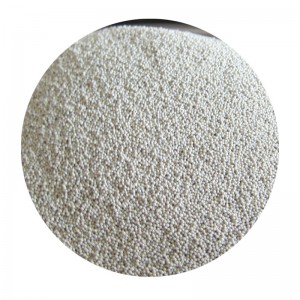Can You Sand a 3D Print? Understanding the Process and Its Importance
3D printing has revolutionized the manufacturing landscape, enabling creators to take a digital design and turn it into a tangible object. While the ability to produce complex geometries and customized items is enticing, many users encounter challenges related to the surface finish of their prints. One of the most effective ways to enhance the aesthetic and tactile quality of a 3D printed object is sanding. But can you sand a 3D print? The answer is a resounding yes, and understanding the process can significantly improve your final product.
Why Sand a 3D Print?
Sanding is often necessary due to the inherent nature of 3D printing technologies, such as Fused Deposition Modeling (FDM) and Stereolithography (SLA). Prints made with FDM often display layer lines and uneven surfaces because they build up layers one at a time. This can lead to objects that look rough or unfinished, particularly for items intended for display or as prototypes for professional use.
Sanding helps to smooth out these layer lines, providing a more polished look. This is especially important for aesthetic prints or functional prototypes where surface quality is vital. Additionally, sanding can enhance the paint adhesion if you plan to paint the print, creating a better bond between the surface and the coating.
The Sanding Process
1. Preparation Before sanding, it is essential to clean your print thoroughly. Remove any support material, and wash the print in warm soapy water to eliminate dust and oils from handling. Allow the print to dry completely before proceeding.
2. Choosing Sandpaper The type of sandpaper you need depends on the material of the print. For FDM prints made from PLA or ABS, begin with coarse sandpaper (around 100-200 grit) to remove excess material and layer lines. Gradually move to finer grits (400, 600, up to 2000) for a smoother finish. For resin prints, start with a finer grit, around 200-300, and progress to finer grits as well.
can you sand a 3d print

3. Sanding Technique Use gentle, circular motions or long strokes in the direction of the print layers to avoid creating scratch marks. Applying too much pressure can lead to uneven surfaces or even damage the print. Take your time and inspect the surface frequently to ensure that you achieve the desired finish.
4. Wet vs. Dry Sanding Some users prefer wet sanding, which involves dampening the sandpaper or the print surface. Wet sanding can help prevent dust from accumulating and allows for a smoother finish by minimizing friction's heating effect, which can soften some printed materials.
5. Finishing Touches After reaching your desired level of smoothness, clean the print again to remove any sanding dust. If you plan to paint the print, consider applying a primer to fill in any remaining imperfections and further smooth the surface.
The Benefits of Sanding
Sanding not only enhances the looks of your 3D prints but also improves their functionality. Smoother surfaces can reduce friction in moving parts, leading to better performance in mechanical applications. Moreover, a well-finished print is more pleasing to the eye and can make a significant difference in presentation, particularly for prototypes in professional settings.
Conclusion
In summary, you can indeed sand a 3D print, and doing so can significantly enhance its appearance and functionality. Understanding the right techniques, sandpaper choices, and process will allow you to achieve a smooth, polished finish that elevates your 3D printed objects from rough prototypes to beautiful displays. Whether you are a hobbyist or a professional, mastering the art of sanding can open up new possibilities in your 3D printing projects, allowing your creativity to shine through with every print. So, embrace the sanding process, and see your 3D creations transformed into polished works of art!
Post time:Ное . 09, 2024 08:42
Next:Exploring the Techniques and Benefits of Sand Casting in Metal Fabrication
